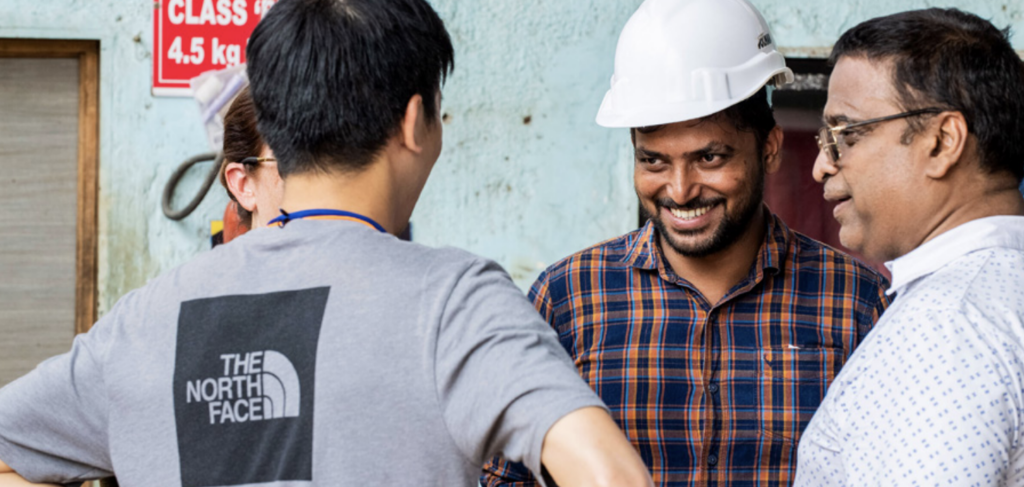
Dear Fashion: Let’s Step Up and Get Aligned
In a recent opinion editorial with WWD, CEO Colin Browne argues fashion needs to take more serious and coordinated action on sustainability. Read the highlights here!
Read how VF Corp. uses Higg Product Tools to assess their environmental footprint.


— Jeannie Renné-Malone, VP Global Sustainability at VF Corporation
In order to assess and measure progress toward its science-based targets (SBTs), VF Corporation utilizes the Higg Index tools, including the Higg Facility Environmental Module (FEM) and the Higg Material Sustainability Index (MSI) to measure greenhouse gas (GHG) emission reductions. These tools help VF measure, assess, and ultimately inform their Scope 3 environmental impact reduction strategy. In 2019, VF set approved SBTs to reduce their Scope 1 and 2 GHG emissions by 55 percent and Scope 3 emissions by 30 percent by 2030 from a 2017 baseline.
Central to their sustainability strategy is the company’s Sustainable Materials Vision, with VF aiming to source its most commonly used materials from regenerative, responsibly sourced renewable, and /or recycled sources by 2030. VF employs tools like Higg MSI to determine the environmental footprint of materials and prioritize sustainable material substitutions that contribute to progress toward their SBTs. Further extending the reach of their sustainability efforts, VF collaborates closely with their global supply chain partners, engaging hundreds of Tier 1 and Tier 2 suppliers in the adoption of Higg FEM assessments and emissions management enhancements. Through this process, VF has trained over 1,000 supplier facility managers, equipping them with the knowledge and tools necessary to implement best environmental practices.
Through the utilization of Higg FEM and Higg MSI, VF Corporation captures data along their value chain and conducts rigorous analytics to pinpoint emission hotspots, with the majority of GHG emissions originating from their supply chain. The company engages with an array of stakeholders to identify and implement actions to reduce GHG emissions, establish best practices, calculate impacts, and measure progress toward goals. VF actively invests in renewable energy for its direct operations, and integrates emission reduction considerations across their entire value chain, spanning from material sourcing to waste management. VF’s holistic approach to sustainability and their commitment to industry collaboration underscores their determination to combat climate change and foster a more sustainable future.
Discover how a leading international clothing retailer utilizes Higg FEM and Higg MSI to shape their decarbonization strategy and pave the way for meaningful change.
Read how this American-based performance athletic company uses Higg Product Tools to assess their environmental footprint.